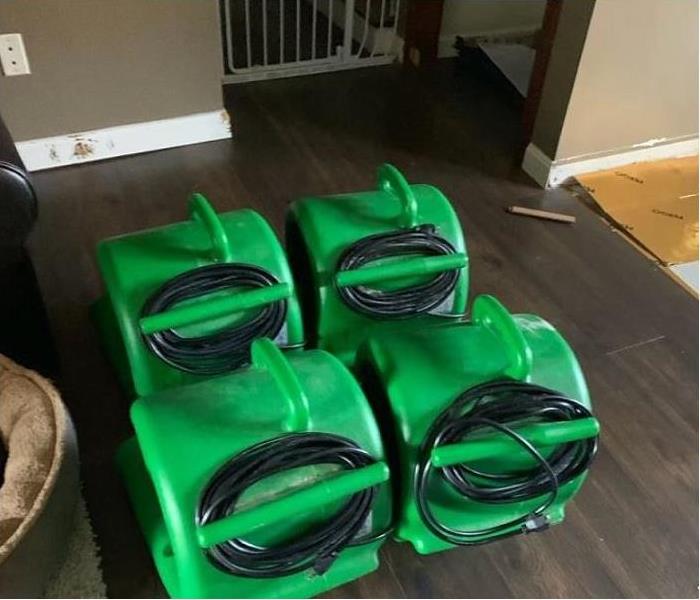The Importance of Humidity Controls During Flood Damage Restoration in Taunton
2/19/2020 (Permalink)
 When floodwaters damaged this home, SERVPRO answered the call to make it, "Like it never even happened."
When floodwaters damaged this home, SERVPRO answered the call to make it, "Like it never even happened."
Establishing Humidity Controls in Flood Damage Restoration across Taunton
Water evaporates and condensates in a constant cycle. When flooding hits your home, the process of evaporation continues and can raise the relative humidity of the affected area significantly. High levels of humidity can become a problem for homeowners because it promotes the growth of microbes like bacteria, mold, and viruses as well as slowing down the restorative drying process. When dealing with properties that are suffering from the impact of flooding, one crucial mitigation task facing restorers is to bring humidity levels back under control and protect the home from secondary damages.
Pumping equipment is a fast-acting remedy toward flood damage in your Taunton home. However, the restorative drying procedure can be equally challenging, with several factors for SERVPRO technicians to consider. Some of these factors may relate to the architecture of the structure. Other factors may relate to the type of floodwaters and their location within the home. We identify areas of concern and anticipate possible outcomes using our industry-leading qualifications, technology, and experience.
Remediation of your home often begins before the drying procedure takes place correctly. Contamination levels are category two or category three when dealing with floodwaters. SERVPRO technicians work hard to decontaminate waters during the pumping and extraction phase, then disinfecting the structure after. However, by implementing humidity controls during the decontamination phase, we can help to reduce moisture migration and microbial amplification.
Setting up humidity controls is achievable by using dehumidifiers, which are either refrigerant, working similarly to air conditioning, or with desiccant chemicals which utilize moisture-absorbing gel. In situations where flooding is limited to one portion of the structure but not others, we can set up negative air pressure using an air filtration device. Using negative air pressure can affect humidity controls, and we may need to use more powerful dehumidifiers to achieve the same result.
Maintaining a healthy humidity during the restoration of floodwaters is essential to avoiding expensive secondary damages. Contact SERVPRO of Taunton / Mansfield at (508) 824-0200 for assistance.
More about Taunton.

 24/7 Emergency Service
24/7 Emergency Service